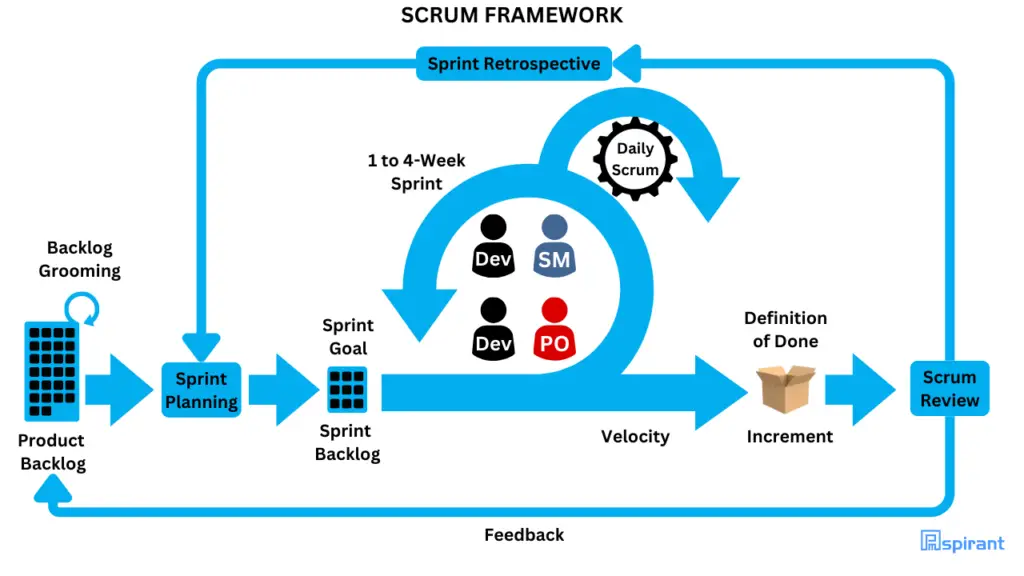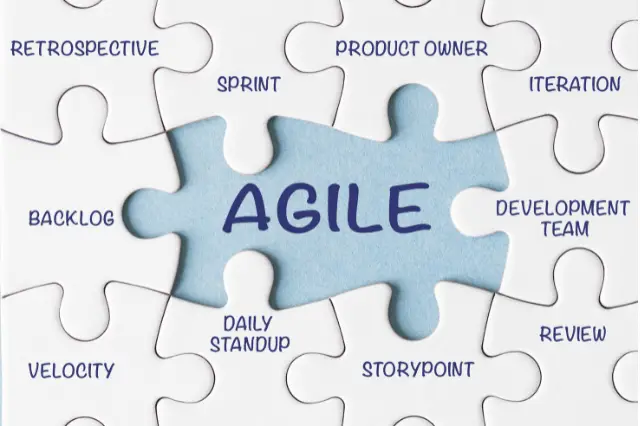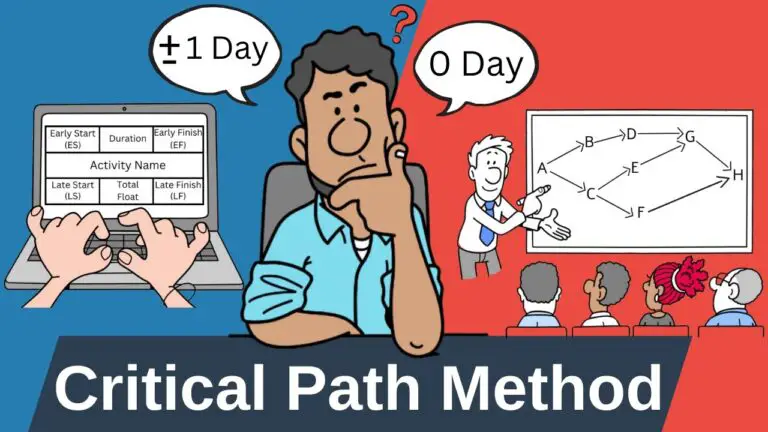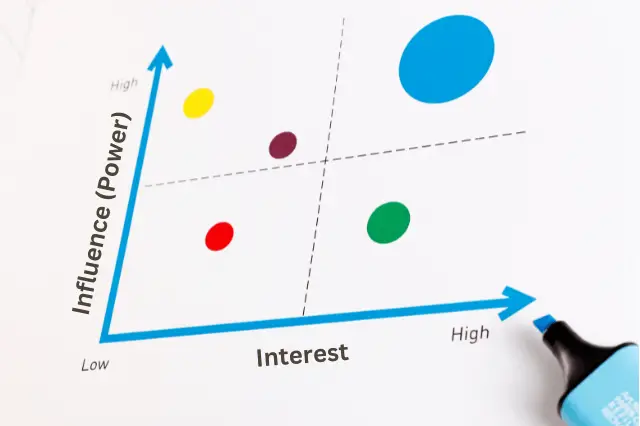Last Updated on February 24, 2025 by andrewshih
Scrum is one of the most popular frameworks in Agile project management. It helps teams navigate complex projects while delivering value incrementally. Scrum provides a structured yet flexible approach to managing projects and fostering collaboration.
Scrum is a key topic in certifications like PMP (Project Management Professional), CAPM (Certified Associate in Project Management), PMI-ACP (Agile Certified Practitioner), and Certified ScrumMaster (CSM).
This guide explains the core principles of Scrum, its roles, artifacts, events, key concepts, and comparison with Kanban and XP to help you prepare the certifications.
- What is Scrum?
- Scrum Values
- Core Principles of Scrum
- Key Roles in Scrum
- Self-Organizing Teams
- Scrum Artifacts: Tools for Transparency and Alignment
- Definition of Done (DoD)
- Backlog Grooming
- Scrum Events: Establishing a Regular Cadence
- Sprint Goal
- Scrum Metrics for Performance Tracking
- Benefits of Scrum
- Challenges of Scrum
- Continuous Improvement: A Cornerstone of Scrum
- Ideal Use Cases for Scrum
- Key Differences Between Scrum, Kanban, and XP
- Conclusion
What is Scrum?
Scrum is an Agile framework that helps teams deliver work in small, manageable pieces called sprints. It is designed to handle complex projects by breaking tasks into smaller parts and focusing on collaboration and continuous improvement.

Scrum uses defined roles, events, and tools to keep work clear and adaptable. It works well for projects where requirements may change, such as in software development or marketing.
Scrum provides enough structure to guide teams while staying flexible to meet their specific needs.
Scrum Values
The Scrum Values define the culture and mindset teams must embrace to succeed with Scrum. They guide behavior and decision-making, fostering collaboration and accountability.
- Commitment: Team members are dedicated to achieving the goals of the sprint and the project.
- Focus: The team concentrates on the sprint goal and avoids distractions.
- Openness: Team members share progress, challenges, and feedback openly to build trust and transparency.
- Respect: Individuals respect each other’s skills, contributions, and perspectives, fostering a positive team environment.
- Courage: Teams have the courage to take on challenges, experiment, and make decisions to drive progress.
These values create a foundation for effective teamwork and enable Scrum teams to thrive in dynamic environments.
Core Principles of Scrum
Scrum is based on three core principles: empiricism, transparency, and continuous improvement.
Empiricism is the foundation of Scrum. Decisions are made based on observation, experience, and experimentation rather than on predictions. This approach ensures teams can adjust their workflows based on real-world data and outcomes.
Transparency enables all team members and stakeholders to have a clear understanding of the work and its progress. Scrum achieves this through visual artifacts, consistent communication, and shared definitions of success.
Inspection and Adaptation allow teams to regularly evaluate their processes and outcomes, identifying opportunities for improvement and making necessary adjustments.
These principles create an environment where teams can deliver value iteratively while staying aligned with evolving requirements and priorities.
Key Roles in Scrum
Scrum defines three primary roles that are essential for its successful implementation:
Product Owner
The Product Owner is responsible for maximizing the value of the product by prioritizing work in the Product Backlog. They ensure the team is focused on delivering the most valuable tasks.
Scrum Master
The Scrum Master serves as a facilitator and servant leader, ensuring the team adheres to Scrum principles. They work to remove obstacles, promote collaboration, and foster a productive environment.
Development Team
The Development Team is a self-organizing, cross-functional group that works to deliver a potentially shippable product increment at the end of each sprint. This team has full ownership of how work is planned and executed.
These roles ensure that responsibility and decision-making are clearly distributed, allowing the team to work efficiently and effectively.
Self-Organizing Teams
Scrum emphasizes the importance of self-organizing teams, meaning that members decide how to accomplish their work without direct supervision.
Benefits of Self-Organizing Teams:
- Encourages autonomy and accountability.
- Promotes creative problem-solving.
- Enhances team morale and collaboration.
These teams are empowered to manage their workflows, fostering a culture of ownership and innovation.
Scrum Artifacts: Tools for Transparency and Alignment
Scrum artifacts provide structure and clarity, ensuring that everyone involved in the project is aligned.
Product Backlog
The Product Backlog is a dynamic, prioritized list of all features, requirements, and fixes needed for the product. It evolves as feedback is gathered and priorities shift, ensuring the work remains aligned with customer and stakeholder needs.
Sprint Backlog
The Sprint Backlog is a subset of the Product Backlog that the Development Team commits to completing during a sprint. It serves as a plan for achieving the sprint goal and is managed exclusively by the team.
Increment
The Increment represents the sum of all completed Product Backlog items at the end of a sprint. It must meet the team’s Definition of Done to ensure quality and readiness for use or release.
These artifacts enhance transparency, track progress, and ensure alignment with both short-term and long-term objectives.
Definition of Done (DoD)
The Definition of Done (DoD) is a shared understanding of what it means for a task or increment to be complete. It ensures consistency, quality, and alignment across all work.
Key Elements of DoD:
- Code must be fully tested and integrated.
- Documentation must be updated.
- Stakeholders must approve the deliverable.
The DoD reduces misunderstandings and ensures deliverables are ready for use or release.
Backlog Grooming
Also known as backlog refinement, backlog grooming is an ongoing process where the Product Backlog is updated to ensure tasks are clear, prioritized, and ready for future sprints.
Benefits of Backlog Grooming:
- Helps the team plan more efficiently.
- Clarifies task requirements.
- Reduces ambiguity during sprint planning.
By keeping the backlog well-organized, teams can maintain momentum and focus on high-value tasks.
Scrum Events: Establishing a Regular Cadence
Scrum includes five events designed to promote collaboration, focus, and continuous improvement:
Sprint
A sprint is a time-boxed iteration, typically lasting 1-4 weeks, during which the team works on a defined set of tasks. Each sprint culminates in a potentially shippable product increment.
Sprint Planning
Sprint Planning sets the stage for the sprint by defining the sprint goal and selecting items from the Product Backlog. This ensures clarity and alignment on what needs to be achieved.
Daily Stand-Up
The Daily Stand-Up is a short, time-boxed meeting where team members share updates on their progress, discuss upcoming tasks, and address any obstacles. This promotes alignment and transparency within the team.
Sprint Review
The Sprint Review is held at the end of the sprint to inspect the completed work and gather feedback from stakeholders. This feedback is used to refine the Product Backlog for future sprints.
Sprint Retrospective
The Sprint Retrospective is a session where the team reflects on the sprint, discussing what went well, what didn’t, and how they can improve. This fosters a culture of continuous improvement.
These events establish a rhythm for the team, ensuring consistent communication and opportunities for adaptation.
Sprint Goal
The Sprint Goal is a concise, overarching objective for the sprint. It aligns the team’s efforts and provides a shared purpose.
Characteristics of a Sprint Goal:
- Specific and achievable within the sprint.
- Reflective of the highest-priority items in the Sprint Backlog.
- Provides direction and focus for the team.
The Sprint Goal helps ensure that all tasks contribute to a meaningful outcome.
Scrum Metrics for Performance Tracking
Scrum uses several metrics to monitor progress and identify areas for improvement:
Velocity
Velocity measures the amount of work completed during a sprint, helping teams understand their capacity for future sprints. It is typically expressed in story points or other units of work.
Burndown Chart
The Burndown Chart tracks the amount of work remaining versus the time available in a sprint. It provides a visual representation of progress and highlights any potential delays.
Benefits of Scrum
- Improved Flexibility: Teams can adapt to changing priorities and requirements.
- Increased Transparency: Clear roles, artifacts, and events ensure alignment.
- Faster Feedback Loops: Stakeholders can provide input at regular intervals.
- Enhanced Collaboration: Defined roles and events foster teamwork and communication.
Challenges of Scrum
- Cultural Resistance: Teams may struggle to embrace the required mindset shift.
- Requires Commitment: Scrum demands active participation and dedication from all members.
- Not Ideal for All Projects: Highly predictable or simple projects may not benefit from Scrum’s iterative approach.
Continuous Improvement: A Cornerstone of Scrum
Scrum fosters a mindset of continuous improvement, encouraging teams to regularly assess their processes and implement changes. Retrospectives provide an opportunity for reflection and adaptation, ensuring that teams are constantly evolving to meet new challenges and improve efficiency.
Ideal Use Cases for Scrum
Scrum is particularly well-suited for:
- Projects with evolving requirements or uncertainty.
- Teams that need regular feedback to refine their deliverables.
- Small to medium-sized teams capable of close collaboration and self-organization.
By breaking work into smaller, manageable increments and focusing on continuous delivery, Scrum helps teams tackle complexity and remain aligned with customer and stakeholder needs.
Key Differences Between Scrum, Kanban, and XP
While Scrum, Kanban, and Extreme Programming (XP) share Agile principles, they differ in approach and focus:
| Aspect | Scrum | Kanban | XP |
|---|---|---|---|
| Cadence | Time-boxed sprints (1-4 weeks). | Continuous flow of tasks with no time-boxing. | Iterations, often 1-2 weeks. |
| Roles | Defined roles: Product Owner, Scrum Master, Team. | No predefined roles; flexible responsibilities. | Practices integrated into development (e.g., Pair Programming). |
| Planning | Sprint planning defines tasks and goals for each sprint. | Tasks are pulled as capacity allows. | Focuses on planning with technical practices. |
| Focus | Iterative progress with regular feedback loops. | Optimizing workflow and task flow. | Emphasizes engineering practices like Test-Driven Development (TDD). |
| Best For | Teams need strong technical practices alongside Agile principles. | Teams need structure and iterative development. | Teams needing strong technical practices alongside Agile principles. |
Related Article: Scrum vs Kanban Detailed Comparison.
Conclusion
Scrum is a popular framework for Agile project management. It combines structure with flexibility to help teams deliver high-quality results.
By emphasizing collaboration, transparency, and iterative progress, Scrum enables teams to navigate complexity, adapt to change, and consistently deliver value.
Whether you’re managing software development, marketing campaigns, or other types of projects, Scrum’s principles and practices can help your team achieve its goals efficiently.



